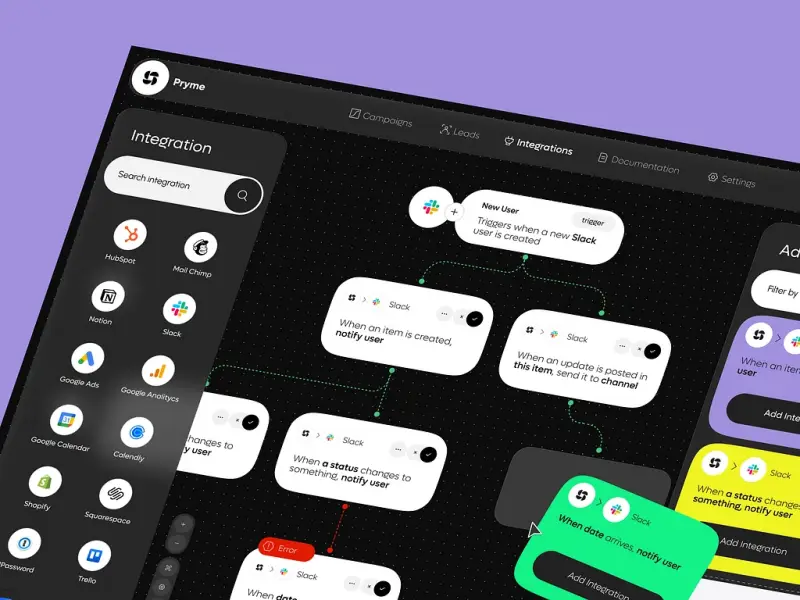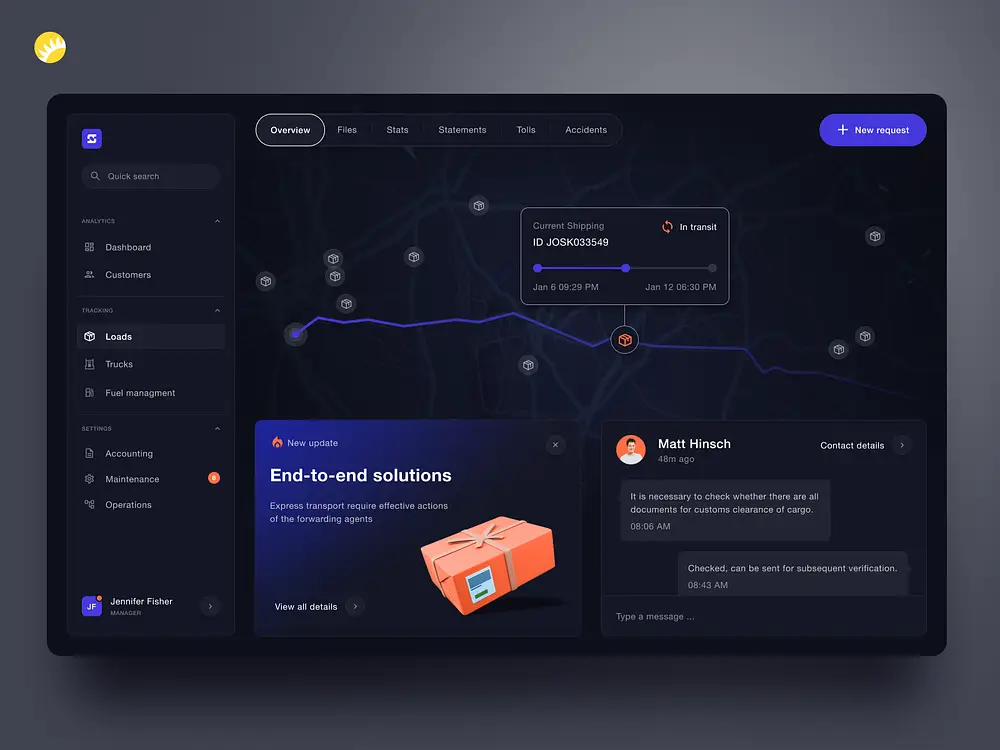What Is Offshore Development Center? Leverage Global IT Talent Now
- David Ho
- 0 Comments
Setting up an offshore development center (ODC) is becoming a crucial strategy for businesses aiming for growth and efficiency. As technology evolves, many large corporations are streamlining their in-house IT teams to reduce costs and enhance flexibility. An ODC offers a dedicated team of skilled professionals who drive innovation and productivity without the constraints of local hiring and overhead expenses.
In today’s competitive market, agility and adaptability are essential. By leveraging an offshore development center, companies can focus on their core business while ensuring that their IT needs are met by experts. This leads to significant cost savings, accelerated project timelines, and improved quality. Moreover, ODCs enable businesses to tap into specialized skills and cutting-edge technologies, fostering continuous improvement and innovation.
At TECHVIFY, we understand the potential and complexities of setting up an offshore development center. Our goal is to guide you through the process with ease. In this article, we’ll explore the critical aspects of establishing an ODC and how TECHVIFY can help you succeed. Let’s discover how an offshore development center can be a game-changer for your business growth.
1. Understanding Offshore Software Development Centers
Establishing your own offshore software development center involves creating an offsite extension of your development operations. This setup typically includes a dedicated cross-functional team, state-of-the-art infrastructure, office equipment, amenities, and comprehensive management processes. The center is designed to handle all aspects of software development, ensuring seamless integration with your existing operations and maintaining high standards of quality and efficiency.

Offshore Software Development
The primary purpose of an offshore development center is to provide scalable tech resources while reducing expenses. Companies can save significant portions of their project execution costs, particularly in terms of:
- Infrastructure
- Staffing
Direct supervision by the client company is a key feature of an offshore development center. Typically, a designated project manager acts as the bridge between business leaders and the offshore team members, ensuring clear communication and alignment on project goals. This structure helps maintain control and oversight, similar to managing an in-house team.
The team structure within an offshore development center is tailored to the specific needs of the company and projects. Common roles include:
- Project managers
- Team leads
- Software engineers
- Front-end developers
- Back-end developers
- QA engineers
- UI/UX designers
- Administrative positions
This diverse team works collaboratively to deliver high-quality software solutions and by leveraging global talent, businesses can access specialized skills and expertise that might be scarce or expensive locally.
Looking to Outsource Development?
Contact TECHVIFY – Vietnam’s Leading Offshore Software Development & Outsourcing Company, for a consultation and development services.
2. Benefits of Offshore Development Centers
Offshore development centers offer numerous advantages for businesses looking to optimize their software development processes and achieve strategic goals. Below are some of the key benefits of setting up an offshore development center:
2.1. Cost Savings
Offshore development centers can significantly reduce expenses associated with infrastructure, staffing, and operational costs. By relocating operations from high-cost regions like the USA, Canada, or Europe to more affordable areas such as Southeast Asia, particularly Vietnam, companies can maximize their budgets and reinvest the savings into other strategic initiatives.
- Minimal Infrastructure Costs: Establishing operations in regions where real estate and utility expenses are a non-issue, as the IT partner company typically handles these aspects. This allows businesses to focus on core activities without worrying about the logistical challenges of setting up and maintaining physical infrastructure.
- Reduced Staffing Expenses: Hiring skilled professionals at a fraction of the cost compared to local markets. The lower wage requirements in these regions enable companies to build large, capable teams without the high salary demands found in Western countries.
- Operational Efficiency: Streamlined processes and reduced overhead contribute to overall cost savings. Offshore development centers often have established workflows and management practices that enhance productivity, allowing for more efficient use of resources and time.
2.2. Focus on Core Business
By offloading development tasks to an offshore development center, companies can allow their in-house teams to concentrate on strategic activities and core business functions. This focus can lead to improved business outcomes and greater growth opportunities.
- Enhanced Strategic Focus: In-house teams can dedicate more time to strategic planning, innovation, and other high-impact activities. This allows for a sharper focus on the company’s long-term goals and market positioning.
- Improved Resource Allocation: Resources can be better allocated to critical business areas, driving overall efficiency and effectiveness. By focusing on core competencies, companies can operate more smoothly and make better use of their expertise.
- Reduced Management Burden: Management can concentrate on key business operations without the added burden of overseeing day-to-day development tasks. This reduction in managerial overhead frees up leadership to focus on growth strategies and customer engagement.
2.3. Access to Global Talent
Offshore development centers provide companies with access to a vast pool of skilled professionals from around the world. This global talent pool can drive innovation and bring diverse perspectives to the development process.
- Diverse Skill Sets: By leveraging talent from different regions, companies can benefit from a wide range of expertise and technical skills. This diversity can lead to more innovative solutions and a higher quality of work.
- Specialized Experts: Offshore centers often have access to specialized experts who may not be readily available in the local market. This allows companies to tackle complex projects with the right expertise.
- Continuous Learning and Development: Many offshore centers invest in the continuous learning and professional development of their employees. This ensures that the talent pool remains up-to-date with the latest technologies and industry best practices, providing companies with cutting-edge capabilities.

Offshore Software Development Center
2.4. Scalability
Businesses can achieve dynamic scalability by leveraging offshore development centers, allowing them to adjust operations seamlessly in response to project demands and market fluctuations. This flexibility ensures they can swiftly adapt to changing needs without being hindered by local hiring constraints or infrastructure limitations.
- Flexible Resourcing: Offshore centers can easily adjust team sizes to match project requirements, whether you need to ramp up for a major initiative or scale down during slower periods. This flexibility helps manage costs and resources more effectively.
- Rapid Deployment: With access to a broad talent pool, offshore centers can quickly onboard new team members. This rapid deployment capability means projects can start faster, keeping your business agile and responsive.
- Cost-Effective Growth: Scaling operations offshore is often more cost-effective than expanding locally. Companies can grow their teams and increase capacity without the high expenses associated with local salaries, benefits, and infrastructure investments.
2.5. Faster Time-to-Market
Accelerating the time-to-market for products and services becomes a reality by leveraging global talent and around-the-clock development cycles. This strategic advantage allows companies to bring their solutions to market faster and more efficiently.
- 24/7 Development Cycles: Offshore teams often operate in different time zones, enabling continuous development. This “follow-the-sun” model ensures that work is being done round-the-clock, reducing project timelines and speeding up delivery.
- Rapid Prototyping and Iteration: Access to a diverse pool of skilled professionals allows for faster prototyping and iterative development. This agility helps in quickly addressing issues, incorporating feedback, and refining products, leading to quicker market readiness.
- Streamlined Processes: Many offshore development centers have established, efficient workflows and use advanced project management tools. These streamlined processes enhance productivity and ensure that projects are completed faster without compromising quality.
3. Step-by-Step in Setting Up an Offshore Development Center
Establishing an offshore development center involves considerable initial effort, but the long-term benefits can significantly outweigh the investment. Here’s a detailed guide to help you navigate the process:
3.1. Define Objectives and Goals
Determining the specific reasons for establishing an offshore development center is crucial. Whether it’s to reduce costs, access a larger talent pool, or achieve scalability, having clear objectives will guide your efforts.
- Identify Business Needs: Understand the primary motivations for setting up an ODC, such as cost savings, talent acquisition, or increased flexibility.
- Set Clear Goals: Establish measurable objectives, including expected outcomes, timelines, and key performance indicators (KPIs). These goals will help in steering the project and evaluating its success.
- Pinpoint Issues to Solve: Clearly define the problems or challenges your offshore development center is intended to address. Whether it’s overcoming local talent shortages, reducing operational costs, or accelerating time-to-market, having a detailed understanding of these issues will shape your strategy.
- Determine Available Budget: Establish a realistic budget that covers all aspects of setting up and running the ODC, including salaries, infrastructure, technology, and management costs. This financial planning is essential for sustainability.
- Assess Level of Control Needed: Decide on the amount of control and oversight you want to maintain over the ODC. This will influence the management structure, reporting lines, and daily operations.
- Choose Type of Entity Management: Determine the type of entity you want to establish, whether it’s a wholly-owned subsidiary, a joint venture, or a partnership with a local firm. Each option has different implications for control, liability, and compliance.
- Define Expected Results: Outline the specific outcomes you expect from the ODC, such as improved project delivery times, enhanced innovation, or cost savings. These expected results should align with your overall business strategy and objectives.
3.2. Choose the Right Location
Selecting the optimal location for your offshore development center is a critical decision that impacts its success. Consider the following factors:
- Research Potential Locations: Evaluate different countries and cities based on criteria such as talent availability, cost of living, political stability, and time zone compatibility with your main office.
- Balance Price and Quality: While cost is an important factor, it shouldn’t be the sole consideration. Aim for a location that offers a balance between price and quality. A lower cost might come with trade-offs in talent quality or infrastructure that could affect long-term success.
- Consider Promising Locations: Vietnam is a particularly promising location for setting up an offshore development center. It offers a growing pool of skilled IT professionals, competitive costs, and a stable business environment.
- Visit Shortlisted Locations: Conduct on-site visits to gain a deeper understanding of the local business environment, infrastructure, and cultural fit. This hands-on approach can provide valuable insights that aren’t apparent from remote research.
3.3. Select a Reliable Partner
Partnering with the right local organizations or service providers can streamline the setup process and ensure ongoing success.
- Evaluate IT Partners: Look for established IT service providers with a proven track record in managing offshore development centers. Assess their experience, client reviews, and service offerings.
- Check References and Reviews: Speak with other companies that have worked with potential partners to gauge their reliability, quality of service, and ability to meet your specific needs. This due diligence can help you avoid common pitfalls and select a partner that aligns with your goals.
Let’s talk
A consultation with the Client Relationship Manager, who represents TECHVIFY, without any commitment from your side, will give you:
- Structured and clear vision of your future application
- Information about how our software development company guarantees 100% on-time and on-budget delivery
- Recommendations for choosing the tech stack
- Advice on further steps
- Business-side recommendations
- Rough project estimation on software development
TECHVIFY is right where you need. Contact us now for further consultation:
3.4. Recruitment and Onboarding
Recruitment and onboarding for your offshore development center (ODC) are crucial steps that will significantly impact the effectiveness of your operations. While your IT partner will manage the recruitment process, it’s essential to maintain oversight and alignment with your organizational needs.
- Define Roles and Requirements: Clearly outline the roles and responsibilities for your ODC, such as developers, project managers, and QA engineers. Specify the seniority levels and skills required for each role. Ensure your IT partner understands these requirements.
- Review and Select Candidates: Review profiles from your IT partner to ensure they meet your criteria. Conduct interviews or assessments to gauge technical expertise and cultural fit. Maintain communication with your IT partner to ensure the recruitment process aligns with your standards.
- Prepare Onboarding Documents: Create onboarding documents that introduce new hires to your company culture, communication channels, and data privacy policies. Ensure these documents help new employees quickly integrate and understand your expectations.
3.5. Establish Communication and Collaboration Channels
Effective communication and collaboration are essential for the success of your offshore development center (ODC). Setting up robust channels ensures that all team members are aligned, informed, and able to collaborate seamlessly despite geographical distances.
- Select Communication Tools: Choose reliable communication tools to facilitate daily interactions. Popular options include Slack for instant messaging, Zoom for video conferencing, and Microsoft Teams for a combination of both. These tools help maintain real-time communication and ensure that team members can easily connect when needed.
- Implement Project Management Software: Utilize project management tools to track progress, assign tasks, and manage deadlines. Tools like Jira, Trello, and Asana are widely used in IT outsourcing for their ability to streamline workflows and provide visibility into project status. These platforms help keep everyone on the same page and facilitate efficient task management.
- Establish Collaboration Platforms: Adopt collaboration platforms to share documents and resources effortlessly. Google Workspace (formerly G Suite) and Microsoft 365 are popular choices, offering cloud-based solutions for document creation, sharing, and real-time collaboration. These platforms support version control and ensure that all team members have access to the latest information.
Learn More On:
3.6. Monitor and Optimize
Continuous monitoring and optimization are vital to ensure the ongoing success and efficiency of your offshore development center (ODC). Regularly assessing performance and making necessary adjustments can help maintain high productivity and address any issues proactively.
- Track Performance Metrics: Establish KPIs such as project completion rates, code quality, and team utilization. Use tools like Jira and GitHub for tracking. Regularly review these metrics to identify trends and areas for improvement.
- Conduct Regular Reviews: Schedule regular performance reviews with your ODC team and IT partner. Assess project progress, team performance, and adherence to timelines. Provide feedback and align on upcoming goals.
- Optimize Processes: Seek opportunities to improve workflows and processes. Gather feedback from your ODC team to identify inefficiencies. Implement agile methodologies like Scrum or Kanban, and update tools and technologies as needed.
4. Offshore Software Development Center Challenges
Setting up and managing an offshore software development center (ODC) comes with its own set of challenges. Being aware of these challenges can help you prepare and implement strategies to mitigate them effectively.
4.1. Communication and Cultural Barriers
Effective communication is crucial for the success of an ODC, but differences in language, communication styles, and cultural norms can create misunderstandings and inefficiencies. These barriers can impact collaboration, project timelines, and overall productivity. Understanding and respecting cultural differences, along with implementing clear communication protocols, can help address these issues.

Offshore Software
4.2. Time Zone Differences
Working across different time zones can complicate coordination and reduce overlap in working hours, making real-time collaboration difficult. This can delay responses and extend project timelines. To mitigate this, establish overlapping working hours and use asynchronous communication tools effectively to ensure continuous progress.
4.3. Quality Control and Consistency
Maintaining consistent quality standards across geographically dispersed teams can be challenging. Differences in work practices, standards, and expectations can lead to inconsistencies in deliverables. Implementing standardized processes, regular code reviews, and robust quality assurance practices can help maintain high standards and consistency across your ODC.
Conclusion
Establishing an offshore software development center (ODC) can offer significant benefits, including cost savings, access to a diverse talent pool, and increased scalability. However, it also presents challenges such as communication and cultural barriers, time zone differences, and maintaining quality control.
By carefully defining roles and requirements, selecting the right candidates, preparing effective onboarding documents, and establishing robust communication and collaboration channels, you can set a strong foundation for your ODC. Continuous monitoring and optimization of performance will ensure sustained efficiency and high productivity.
Addressing the challenges proactively with clear strategies and tools will help you maximize the potential of your ODC, leading to successful and efficient global operations.
Why Do Companies Set Up a Dedicated Offshore Development Center?
Companies set up Dedicated Offshore Development Centers to delegate software development projects and focus on core business responsibilities. This approach gives them access to a global talent pool that is often more affordable than local talent. Additionally, they save money on office space and infrastructure by establishing offices in countries with lower living costs.
Having talented offshore teams dedicated to their projects allows companies to accelerate development and reduce their time to market. Establishing an ODC enables companies to save significant funds, which they can then reinvest in their projects to create improved products, giving them a competitive edge in the market.
What Are the Advantages and Disadvantages of the Offshore Development Center Model?
The main advantages of the Offshore Development Center model include cost efficiency, access to global talent, and business continuity. However, this business model also comes with some disadvantages, such as handling communication and cultural differences, and quality control issues.
TECHVIFY – Global AI & Software Solution Company
From Startups to Industry Leaders: TECHVIFY prioritizes results, not just deliverables. Accelerate your time to market and see ROI early with high-performing teams, AI (including GenAI) Software Solutions, and ODC (Offshore Development Center) services.
- Email: [email protected]
- Phone: (+84)24.77762.666





